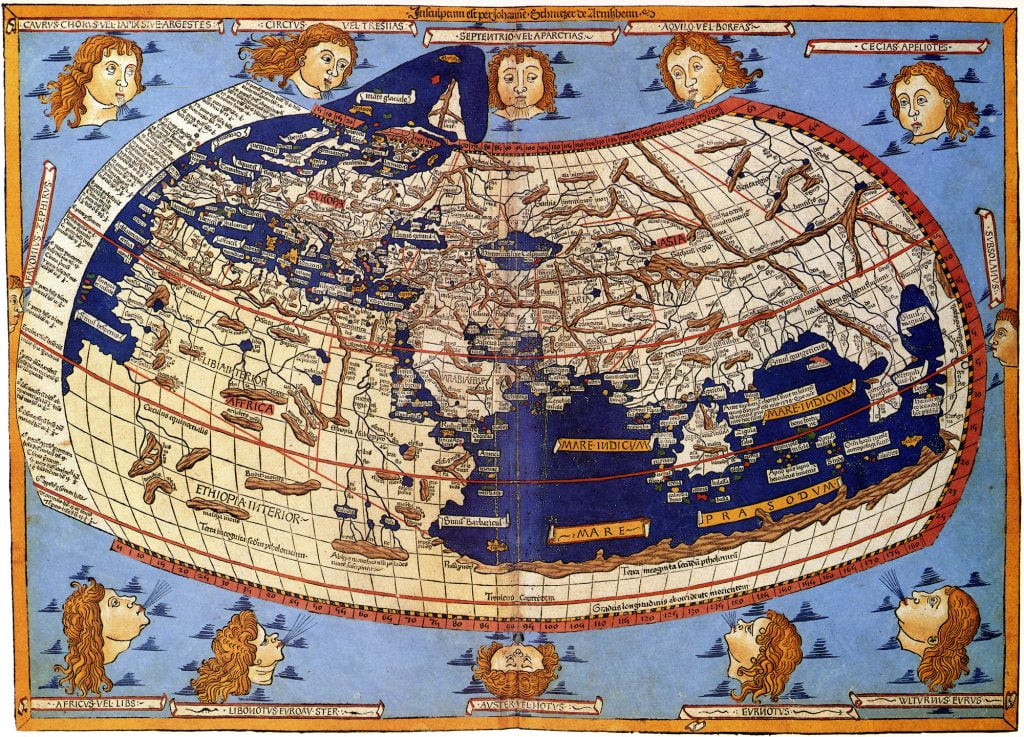AT THE BEGINNING OF HISTORY: THE OLD NÛN

The origins of the city of Nûl Lamta remain shrouded in mystery. Ancient Greek and Roman sources refer to the river Nûl or Nûn, whose bed and banks would, centuries later, protect the city of Nûl Lamta. Pomponius Mela (1st century AD) mentions the river as Nunc or Nuchul, while Claudius Ptolemy in his Geography (2nd century) refers to it as Noulos or Nouios. Paul Orosius (4th-5th century) calls the river Nuhul. All these names point to the same river beyond the borders of the Roman Empire, on the edge of the world as known to classical authors.
According to tradition, a group of Christians, pagans, and Jews founded the city of Nûl Lamta in these remote areas in the 8th century. Shortly thereafter, many of them converted to Islam, marking the beginning of a new phase in the city’s history that continues to this day.
Image: The world map from Leinhart Holle’s 1482 edition of Nicolaus Germanus’ emendations to Jacobus Angelus’ 1406 Latin translation of Maximus Planudes’ late 13th-century rediscovered Greek manuscripts of Ptolemy’s 2nd-century Geography.